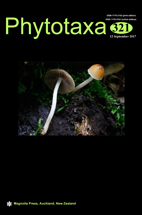Abstract
A non-lichenized Trypetheliaceae species was collected and isolated from dead bark of Pandanus tectorius in Chanthaburi, Thailand. Morphological features of the fungus places it in the genus Novomicrothelia. Phylogenetic analyses of LSU sequence data showed that the fungus clustered together with Novomicrothelia oleosa and formed a well-supported basal clade in the family Trypetheliaceae. The fungus is phylogenetically distinct from the type species N. oleosa, and herein we introduce this taxon as Novomicrothelia pandanicola sp. nov. The new species shares similar ascomatal morphology and trabeculate pseudoparaphyses with N. oleosa, but differs in its muriform ascospores with a gelatinous sheath. Novomicrothelia pandanicola is described, illustrated and notes on its phylogenetic placement are provided.

